By Stephen Wilson
Rising off the wall in Grossman Gallery is an organic shape. While the garish colors feel playful in their bright hues, the texture and shape of the piece feels frightening, almost grotesque, like a creature or a malignant polyp.
Across the gallery on the opposite wall, two pieces, what look like an earthen shell and a rusty crevice, sit in dynamic tension, activating the white wall that separates them.
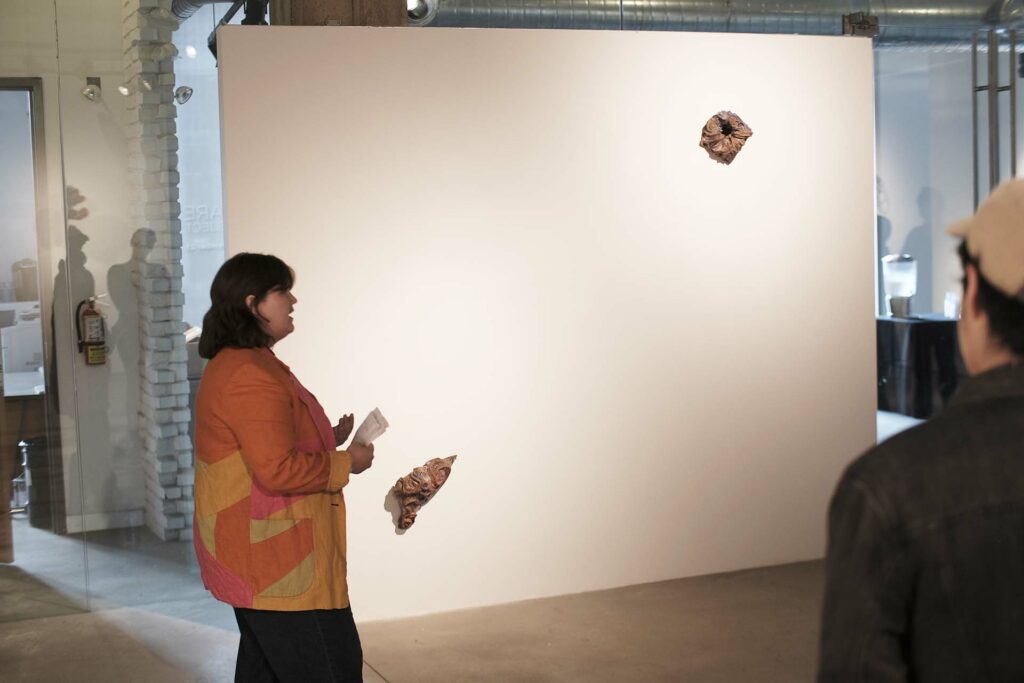 Such is the range of work on display by Kim Altomare, Experimental Printmaking Institute (EPI) Artist in Residence. Over the course of the fall term, while residing on campus, Altomare has taught a class, developed a print project at EPI, furthered her own art in a private studio space, and lectured on her work at a solo exhibition.
Such is the range of work on display by Kim Altomare, Experimental Printmaking Institute (EPI) Artist in Residence. Over the course of the fall term, while residing on campus, Altomare has taught a class, developed a print project at EPI, furthered her own art in a private studio space, and lectured on her work at a solo exhibition.
Conceived by Pedro Barbeito, assistant professor of art and director of EPI, the residency is a collaborative effort between the College and Yale School of Art. Altomare graduated from there in May with her MFA in painting and printmaking.
She was selected for the residency through an application process among 10 candidates who each submitted 20 images of their work and a two-page statement of interest.
“Kim’s work was visually very engaging,” says Barbeito, “and her statement was very elaborate on her goals and interests in pedagogy.”
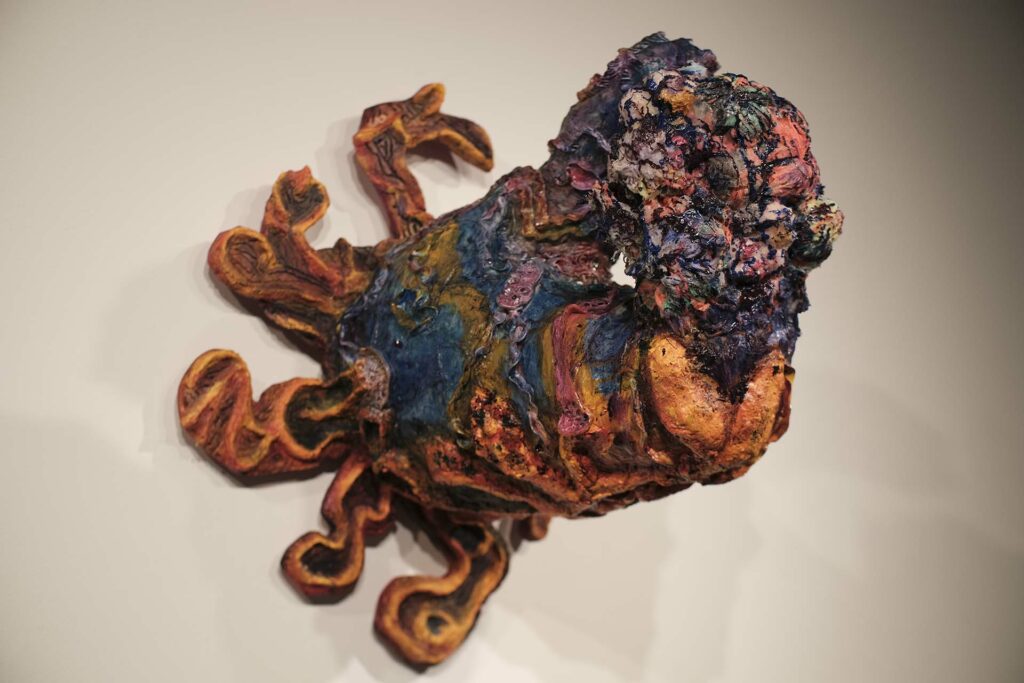 Her work balances upon a central conceit: the transitional object—that delicate balance where object and subject separate. “When the infant recognizes that the blanket is not her,” Altomare says.
Her work balances upon a central conceit: the transitional object—that delicate balance where object and subject separate. “When the infant recognizes that the blanket is not her,” Altomare says.
Getting to that moment when art and artist aren’t one requires two decisions, as she calls them during her gallery talk.
“Allowing the unconscious to work—using associative or automatic drawings to come to something fresh within a body of knowledge and approach an idea you’re uncomfortable with or try to discover something new or unknown for the work,” she says.
“Then using the materials as a substance to help shape and transform that idea,” she says.
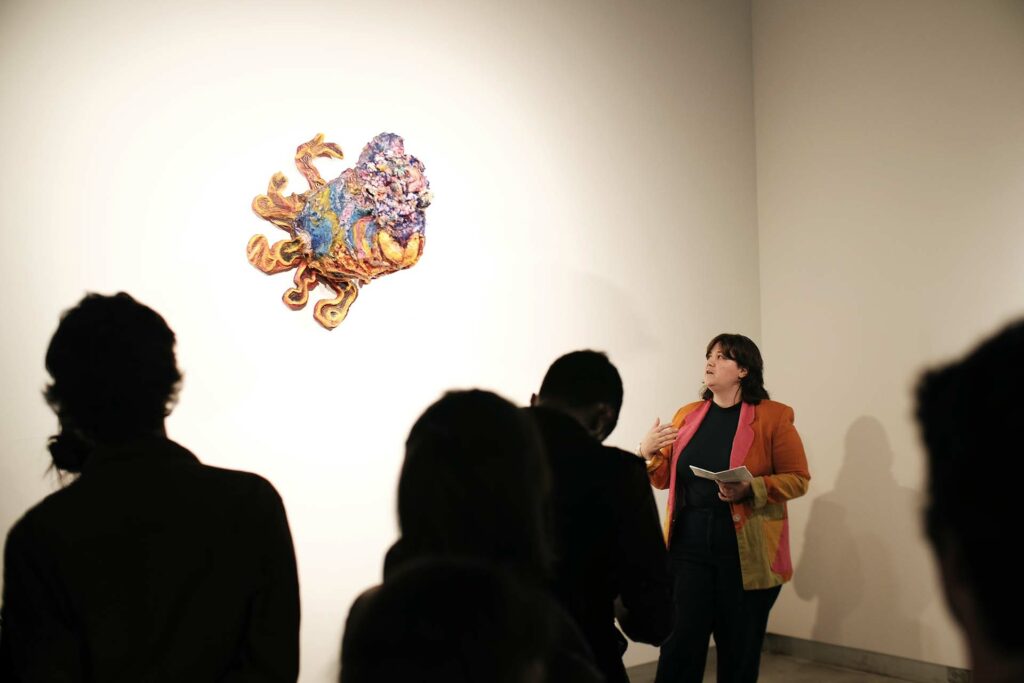 Back at her studio Altomare has work in various stages, including watercolors on paper, drawings of the unrecognizable unconscious, and sculptures rising off the wall.
Back at her studio Altomare has work in various stages, including watercolors on paper, drawings of the unrecognizable unconscious, and sculptures rising off the wall.
The sculptures are an amalgam of papier-mâché, chicken wire, clay, epoxy, pompoms, and paint.
That’s right, pompoms. One piece in the gallery is a platter full of them. Like the kind you’d see atop a classic winter hat.
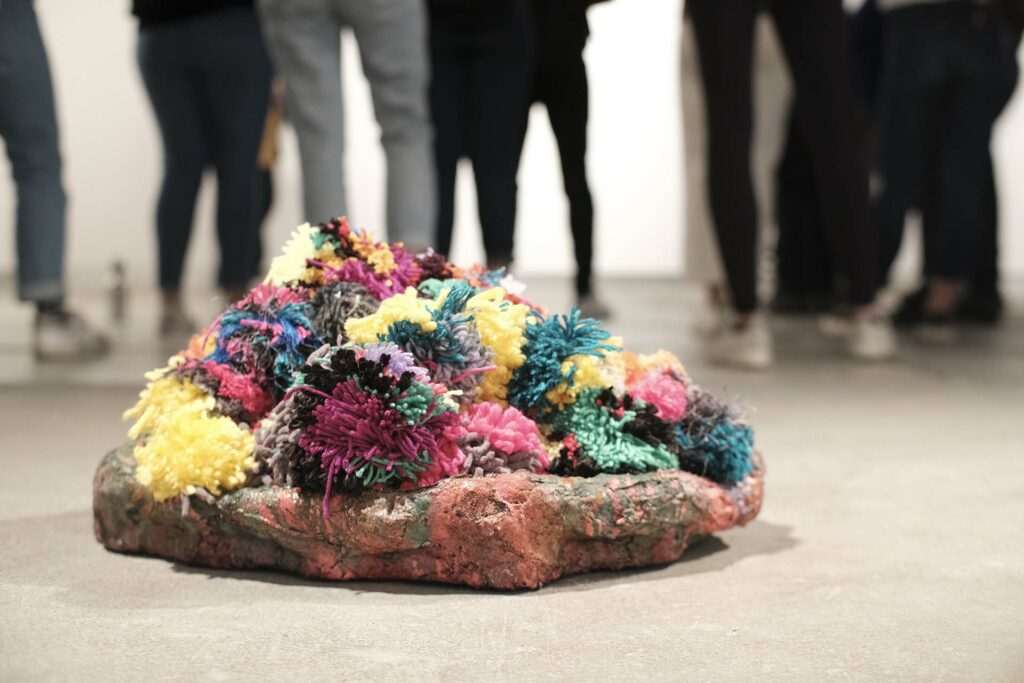 “I can throw them to the audience,” she says. “It creates a sense of touch, something to hold, an embodiment of the work.”
“I can throw them to the audience,” she says. “It creates a sense of touch, something to hold, an embodiment of the work.”
There is a touch of humor in the work.
Lately she has been gluing the pompoms to pieces, changing the nature of that innate softness.
Her studio is still except for the rattle of a dehumidifier. She has enjoyed the space to work and speed of her work.
“There have been no interruptions,” Altomare says, recalling the visits from faculty and artist guests while in graduate school. The stillness is liberating. “I haven’t had to defend my work by constantly putting it into language, so it has been nice to let go of certain ideas and ways of making.”
Seems the shoe is on the other foot now.
So she has been delicate in her role as the guest artist, visiting a senior seminar comprised of graduating art majors at work on a culminating project.
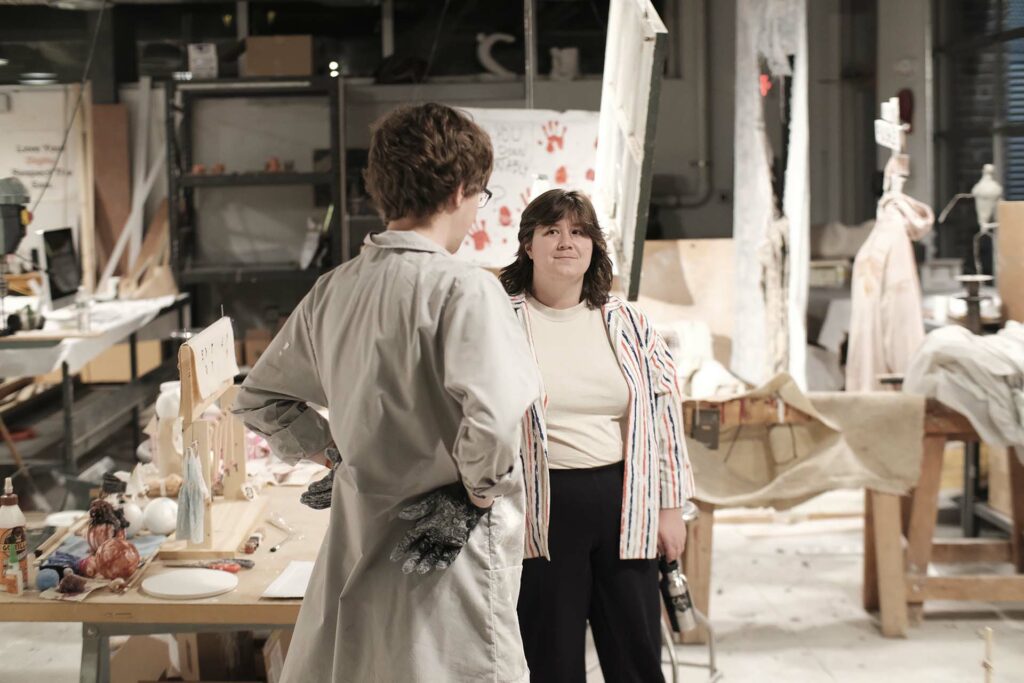 A few weeks ago while at a critique for that class, she moved between three sculpture students, listening to what they were making. One was working on an installation that included a couch, television, windows, and carpet. Another had beadwork over hand-drawn portraits. The third involved a collection of phalluses.
A few weeks ago while at a critique for that class, she moved between three sculpture students, listening to what they were making. One was working on an installation that included a couch, television, windows, and carpet. Another had beadwork over hand-drawn portraits. The third involved a collection of phalluses.
As she spent time with each student, Altomare asked questions about their intent, referenced artists to look at, and what each might consider.
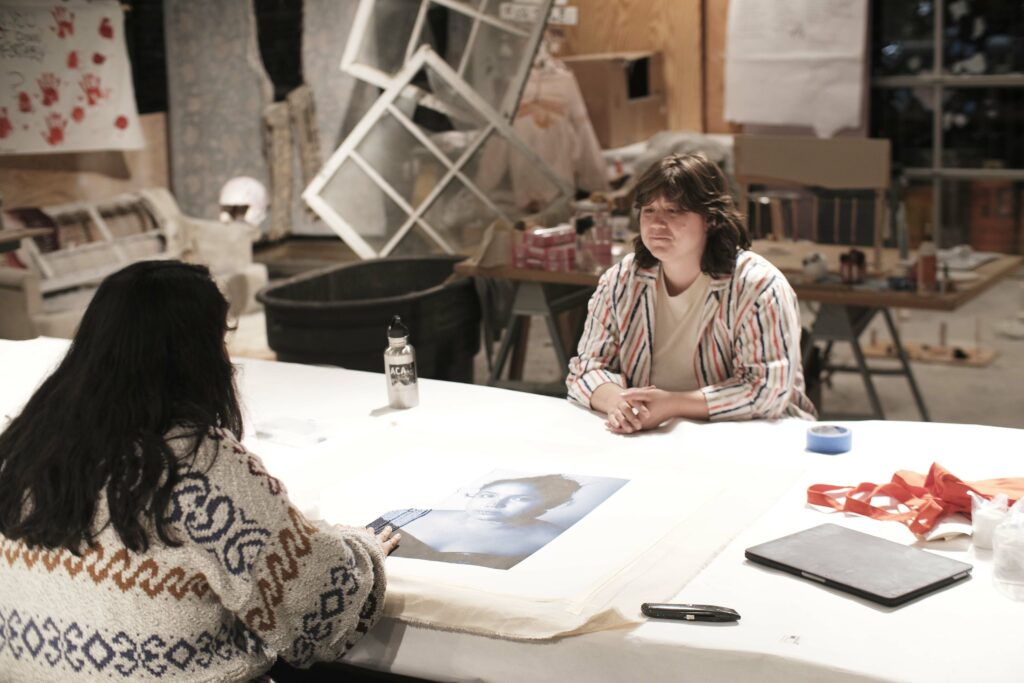 The residency has been an opportunity to help Altomare bridge artist and teacher.
The residency has been an opportunity to help Altomare bridge artist and teacher.
“As I teach drawing, both my students and I are returning to the basic tenets of drawing through assignments like the still life, figure, and self-portrait,” she says. “Throughout the semester, I’ve tried to emphasize the process of learning through doing or making rather than going to preconceived ideas about what is good or bad drawing. Every student, and everyone for that matter, can draw!”
Many of those same students filled the gallery as she discussed her art and processes.
As she walked from piece to piece, she asked viewers to consider how art communicates beyond the visual.

 Such is the range of work on display by
Such is the range of work on display by  Her work balances upon a central conceit: the transitional object—that delicate balance where object and subject separate. “When the infant recognizes that the blanket is not her,” Altomare says.
Her work balances upon a central conceit: the transitional object—that delicate balance where object and subject separate. “When the infant recognizes that the blanket is not her,” Altomare says.  Back at her studio Altomare has work in various stages, including watercolors on paper, drawings of the unrecognizable unconscious, and sculptures rising off the wall.
Back at her studio Altomare has work in various stages, including watercolors on paper, drawings of the unrecognizable unconscious, and sculptures rising off the wall. “I can throw them to the audience,” she says. “It creates a sense of touch, something to hold, an embodiment of the work.”
“I can throw them to the audience,” she says. “It creates a sense of touch, something to hold, an embodiment of the work.” A few weeks ago while at a critique for that class, she moved between three sculpture students, listening to what they were making. One was working on an installation that included a couch, television, windows, and carpet. Another had beadwork over hand-drawn portraits. The third involved a collection of phalluses.
A few weeks ago while at a critique for that class, she moved between three sculpture students, listening to what they were making. One was working on an installation that included a couch, television, windows, and carpet. Another had beadwork over hand-drawn portraits. The third involved a collection of phalluses. The residency has been an opportunity to help Altomare bridge artist and teacher.
The residency has been an opportunity to help Altomare bridge artist and teacher. 